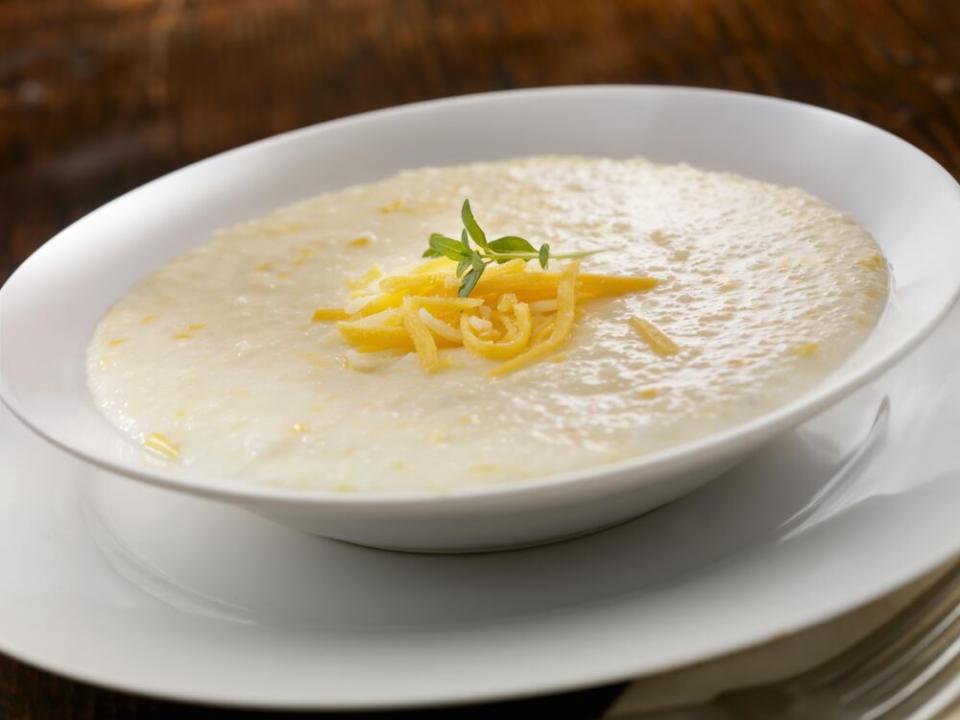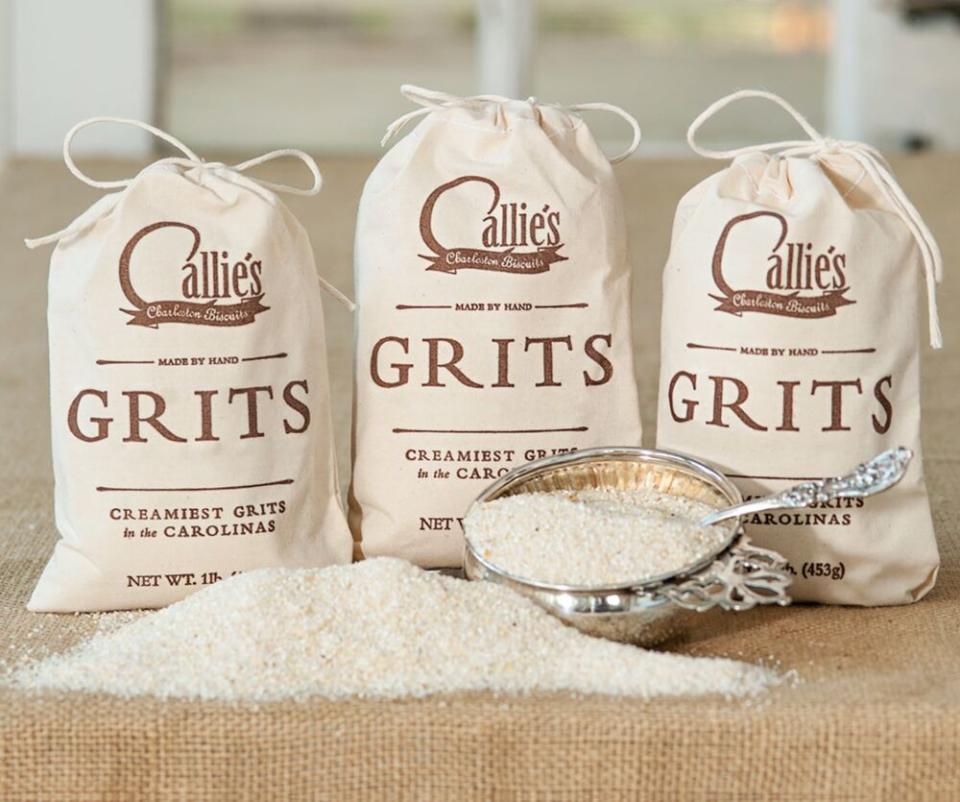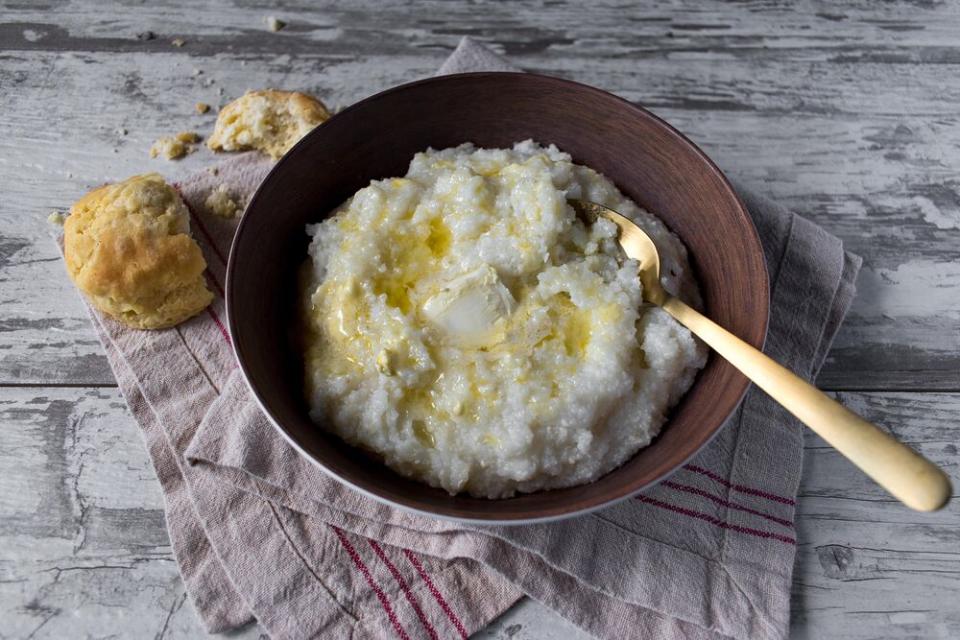What Are Grits—and What Are They Made Of?
Grits are a lot of things: They’re delicious, versatile, and oh-so-easy to make. But what are grits—and where do they come from?
What Are Grits?

Grits are made from dent corn, which has a softer and starchier kernel than other corn varieties. The mature kernels are processed to remove the outer hull, dried, and then ground into smaller bits.
The most basic—and perhaps most common—way to prepare grits is to boil them, then combine them with butter and milk. However, the Southern staple is often “dressed up” with cheeses, spices, sauces, meats, seafoods (shrimp and grits, anyone?), and veggies.
Grits vs. Polenta vs. Cream of Wheat
If grits are just ground corn kernels, then what the heck is polenta? Well, it’s basically Italian grits. The difference is that grits are made from white corn (or hominy), while polenta is made from yellow corn. In a pinch, you can substitute polenta for grits and vice versa—just be aware that polenta has a coarser texture, so your results will be slightly affected.
Cream of wheat, meanwhile, is made from ground kernels of wheat. It looks slightly similar to grits and is typically prepared in a similar way. The textures of the two food products are quite different when cooked, though. True to their names, cream of wheat is creamy and grits are, well, gritty.
Types of Grits
Stone-ground: Whole dried kernels are ground between the stones of a gristmill. They’re often speckled and have a richer corn flavor. This is the old-fashioned way of making grits.
Hominy: Unlike stone-ground grits, which are made from whole kernels, the kernels that are used to make hominy grits have had the hull and germ removed.
Quick: Quick grits are very finely ground and processed to cook quickly.
Instant: These grits have been pre-cooked and dehydrated—all you need to do is add boiling water.
Are Grits Healthy?

Buy it! South Carolina Grits, $9.95
Yes and no. Stone-ground grits are the healthiest option because corn kernels are ground whole, so you reap the benefits of every part of the corn.
They’re also typically less processed (which means they are more perishable). Since other types of grits are ground with the hull and germ removed, they lose the fiber- and iron-rich outer skin and embryo. All that’s left is the starchy center.
Another factor to consider is what you’re adding to your grits. While grits in their simplest form aren’t necessarily bad for you, many people add tons of butter and cheese. Loaded with fatty additions, grits are delicious—but probably not the healthiest choice.
Are They Gluten-Free?
Since grits are not made from grain, barley, or rye, they are gluten-free.
But you need to carefully read the labels before buying—many popular grits brands are not considered gluten-free because of the possibility of cross-contamination.
Are They Keto?
Since corn is considered a great source of carbohydrates, grits aren’t ideal for people following the ketogenic diet.
Grits History

Before grits were topped with shrimp and served at fancy Southern restaurants, Native Americans ate “rockahomine” (mashed corn).
Colonists who settled in Jamestown, Virginia renamed the dish “hominy.”
Cheap, filling, and easy to make, grits quickly became a staple in American diets—particularly in the American South.
How to Make Grits
Remember the ratio 4:1 when cooking grits. This means you should use four cups of water for every cup of grits.
Bring water to a boil and add about one teaspoon of kosher salt for every cup of grits you’re cooking.
Stir or whisk in the grits.
Reduce the heat to a low simmer, whisking or stirring occasionally, until grits are thick and creamy.
Grits Recipes

While there is something to be said for a bowl of basic grits, the comforting dish is at its best when it’s smothered in butter, cheese, and other creative ingredients. Here are a few of our favorite recipes that make good use of grits:

